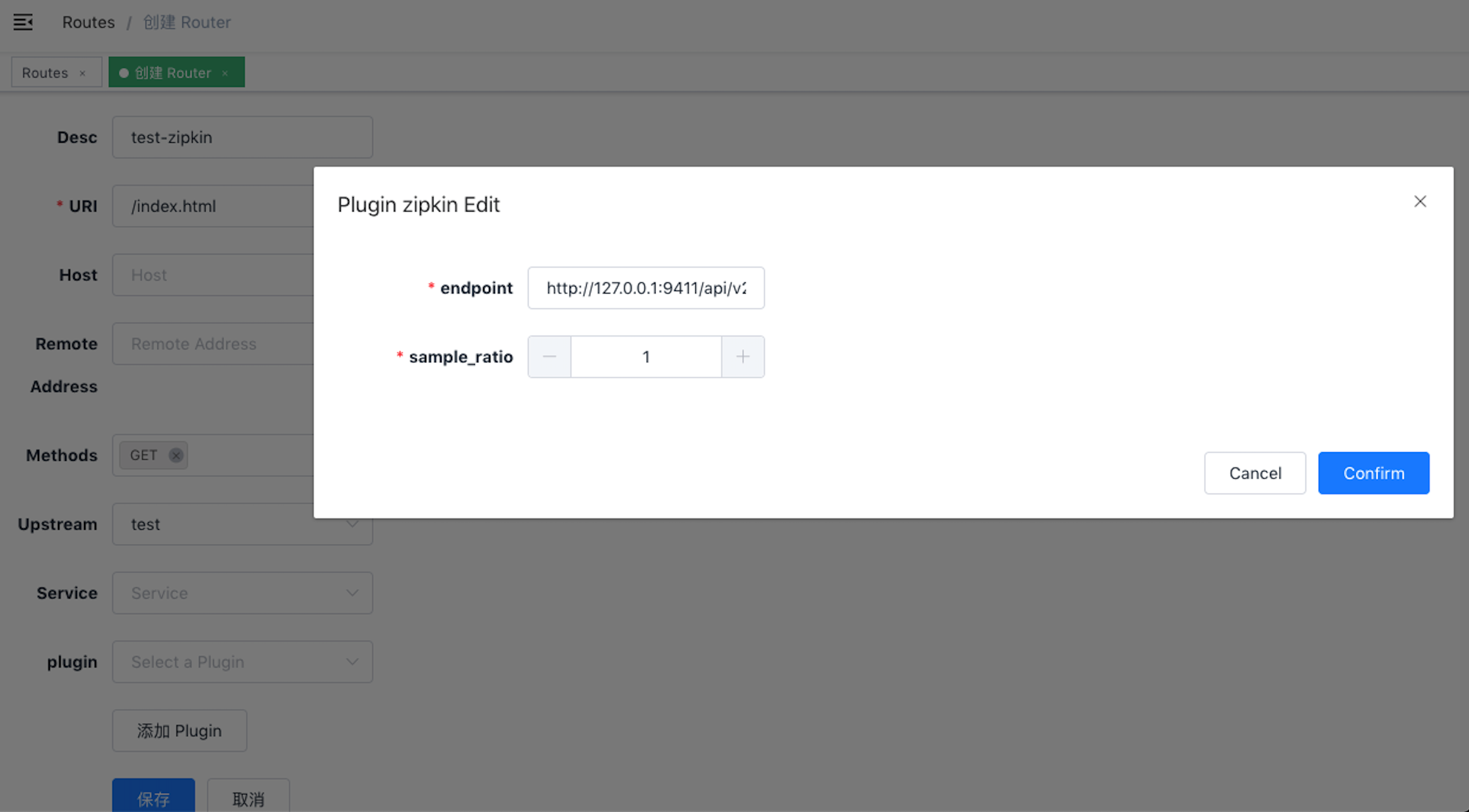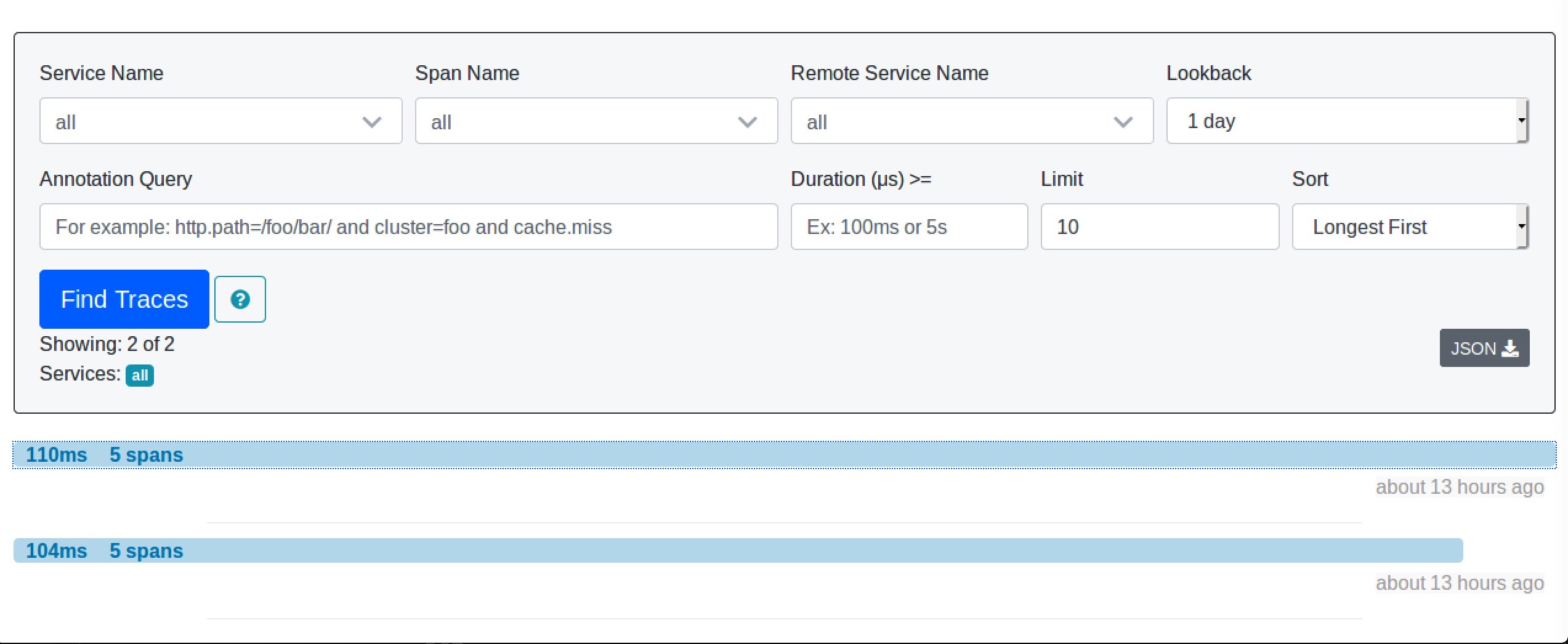Zipkin
Summary#
Name#
Zipkin is a OpenTracing plugin.
It's also works with Apache SkyWalking, which is support Zipkin v1/v2 format.
Attributes#
| Name | Type | Requirement | Default | Valid | Description |
|---|---|---|---|---|---|
| endpoint | string | required | the http endpoint of Ziplin, for example: http://127.0.0.1:9411/api/v2/spans. | ||
| sample_ratio | number | required | [0.00001, 1] | the ratio of sample | |
| service_name | string | optional | "APISIX" | service name for zipkin reporter | |
| server_addr | string | optional | IPv4 address for zipkin reporter, default is nginx built-in variables $server_addr, here you can specify your external ip address. | ||
| span_version | integer | optional | 2 | [1, 2] | the version of span type |
Currently each traced request will create spans below:
request├── proxy: from the beginning of the request to the beginning of header filter└── response: from the beginning of header filter to the beginning of logPreviously we created spans below:
request├── rewrite├── access└── proxy └── body_filterNote: the name of span doesn't represent the corresponding Nginx's phase.
If you need to be compatible with old style, we can set span_version to 1.
How To Enable#
Here's an example, enable the zipkin plugin on the specified route:
curl http://127.0.0.1:9080/apisix/admin/routes/1 -H 'X-API-KEY: edd1c9f034335f136f87ad84b625c8f1' -X PUT -d '{ "methods": ["GET"], "uri": "/index.html", "plugins": { "zipkin": { "endpoint": "http://127.0.0.1:9411/api/v2/spans", "sample_ratio": 1, "service_name": "APISIX-IN-SG", "server_addr": "192.168.3.50" } }, "upstream": { "type": "roundrobin", "nodes": { "39.97.63.215:80": 1 } }}'You can open dashboard with a browser: http://127.0.0.1:9080/apisix/dashboard/, to complete the above operation through the web interface, first add a route:

Then add zipkin plugin:

Test Plugin#
run the Zipkin instance#
e.g. using docker:
sudo docker run -d -p 9411:9411 openzipkin/zipkinHere is a test example:
$ curl http://127.0.0.1:9080/index.htmlHTTP/1.1 200 OK...Then you can use a browser to access the webUI of Zipkin:
http://127.0.0.1:9411/zipkin

Disable Plugin#
When you want to disable the zipkin plugin, it is very simple, you can delete the corresponding json configuration in the plugin configuration, no need to restart the service, it will take effect immediately:
$ curl http://127.0.0.1:9080/apisix/admin/routes/1 -H 'X-API-KEY: edd1c9f034335f136f87ad84b625c8f1' -X PUT -d '{ "methods": ["GET"], "uri": "/index.html", "plugins": { }, "upstream": { "type": "roundrobin", "nodes": { "39.97.63.215:80": 1 } }}'The zipkin plugin has been disabled now. It works for other plugins.
example code for upstream ( golang with Gin )#
func GetTracer(serviceName string, port int, enpoitUrl string, rate float64) *zipkin.Tracer { // create a reporter to be used by the tracer reporter := httpreporter.NewReporter(enpoitUrl) // set-up the local endpoint for our service host is ip:host
thisip, _ := GetLocalIP()
host := fmt.Sprintf("%s:%d", thisip, port) endpoint, _ := zipkin.NewEndpoint(serviceName, host) // set-up our sampling strategy sampler, _ := zipkin.NewCountingSampler(rate) // initialize the tracer tracer, _ := zipkin.NewTracer( reporter, zipkin.WithLocalEndpoint(endpoint), zipkin.WithSampler(sampler), ) return tracer}
func main(){ r := gin.Default()
tracer := GetTracer(...)
// use middleware to extract parentID from http header that injected by APISIX r.Use(func(c *gin.Context) { span := this.Tracer.Extract(b3.ExtractHTTP(c.Request)) childSpan := this.Tracer.StartSpan(spanName, zipkin.Parent(span)) defer childSpan.Finish() c.Next() })
}